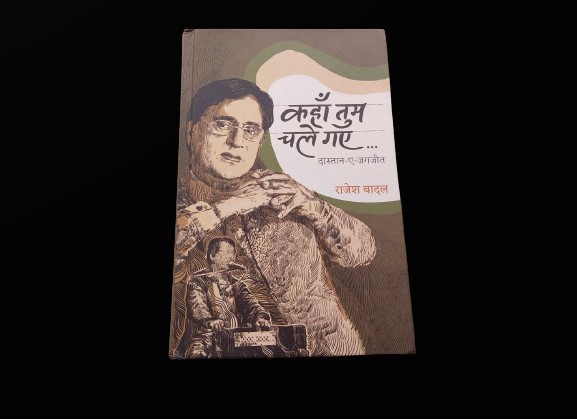If there is one person who should be credited for popularizing Ghazals among the masses in India, it has to be Jagjit Singh. The singer, with a velvety voice, left for his heavenly abode on 10 October, 2011 but left a rich legacy of great music behind him. ‘Kahaan Tum Chale Gaye – Daastaan – e – Jagjit’ is a biography of the late singer-composer authored by renowned journalist and filmmaker Rajesh Badal that hit the stores a few months back.
The 240-page long book documents not just Jagjit’s journey as a singer and composer in Mumbai but also offers one a good glimpse of his life before he became a celebrity. The book features several anecdotes, including some incidents from Jagjit’s childhood, which are bound to warm the cockles of your heart.
The book begins on a heart-warming note with a section called ‘Bhumika’ in which Kartar Singh, Jagjit’s younger brother, shares his impressions and memories of his elder brother. After that, we are introduced to another section called ‘Apni Baat’ in which the author talks about why he decided to write a book on Jagjit. Apart from explaining the reason behind documenting Jagjit’s journey, Rajesh also familiarizes the reader with a brief history of ghazal.
The first chapter, which is titled ‘Sri Ganganagar Ki Galiyon Mein’, covers Jagjit’s childhood and some of the interesting events in his life that he witnessed while growing up in this small town in Punjab. Rajesh writes about the incidents so beautifully that you can visualize them happening right in front of your eyes. Each and every phase of Jagjit’s life has been documented in a very detailed manner and that is one of the major strengths of this book.
While reading the book, you also get an idea about the way the music industry in Mumbai functions or used to function back in the day. After playing a brief role in the Rajendra Kumar – Saira Banu starrer ‘Aman’, Jagjit decided to bid adieu to his acting ambitions he felt a Sardar would never be accepted as a mainstream actor. He further believed that it would be difficult for him to connect to his listeners or an audience as a Sardar. Because of this, he took the drastic step of cutting off his long hair and stopped wearing a pagdi. While one is not sure whether the audience would have accepted a Sardar performing or singing in front of them or not back then, the success of mainstream singers, who double up as actors (or is it the other way around?) like Diljit Dosanjh and Ammy Virk have made it clear that that’s definitely not the case today.
The book also tells us that Jagjit Singh, as a composer, believed in innovations and trying out new sounds. In ‘Sarakti Jaaye Rukh Se’, he used a unique Afghani instrument that was seldom used in Hindi music. While talking about the ghazals sung and/or composed by Jagjit, Rajesh does a very thoughtful thing. He mentions the name of the poets who wrote these ghazals. He acknowledges the contribution of these poets towards making the melodies sung by Jagjit memorable.
I discovered Jagjit Singh through his album ‘Marasim’ which was released in the year 1999. Though I was a child who had not even stepped into the first grade by then, his voice resonated with me. Reading ‘Kahaan Tum Chale Gaye – Daastaan – e – Jagjit’ felt like re-discovering Jagjit and the immortal melodies he created in his lifetime. It is a wonderfully written book that should be read by each and every individual who has connected with Jagjit’s music at some point in their lives.

